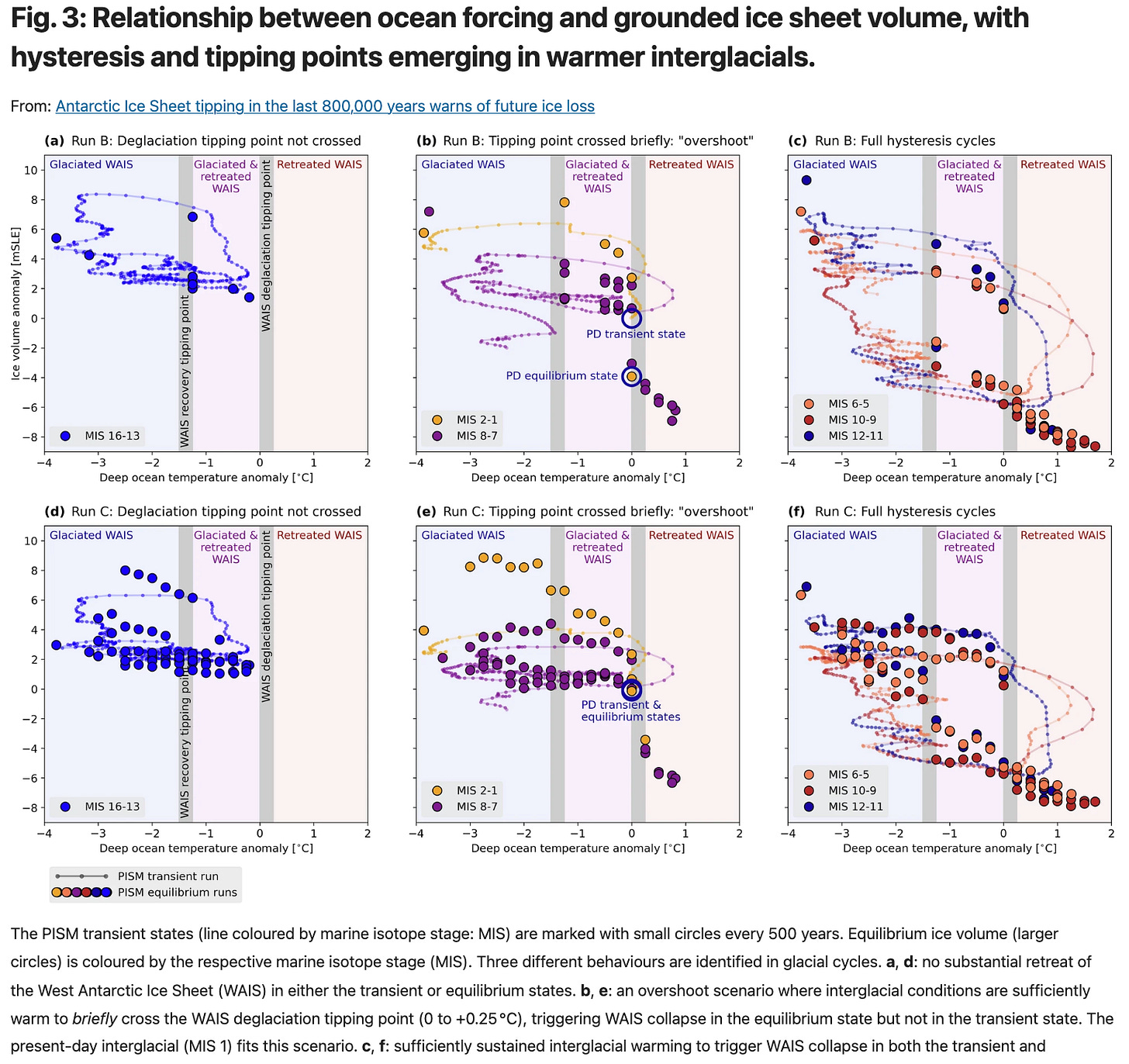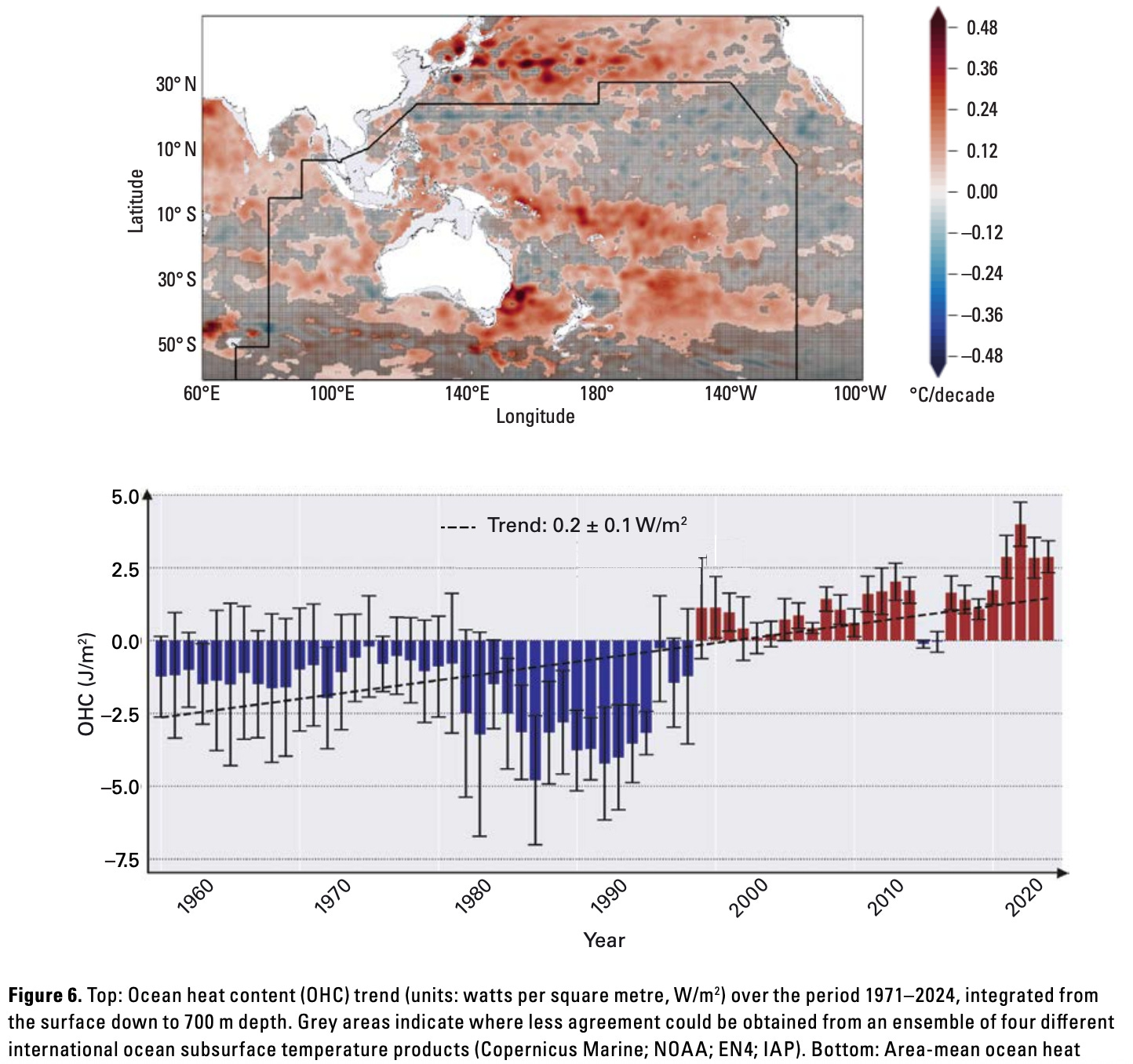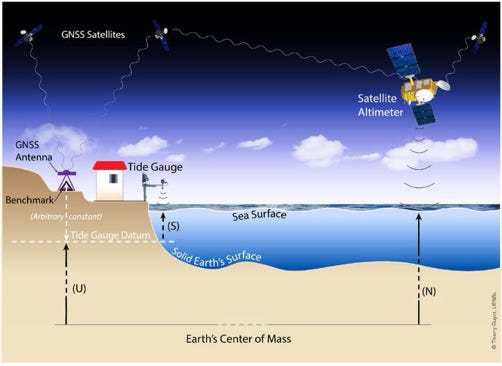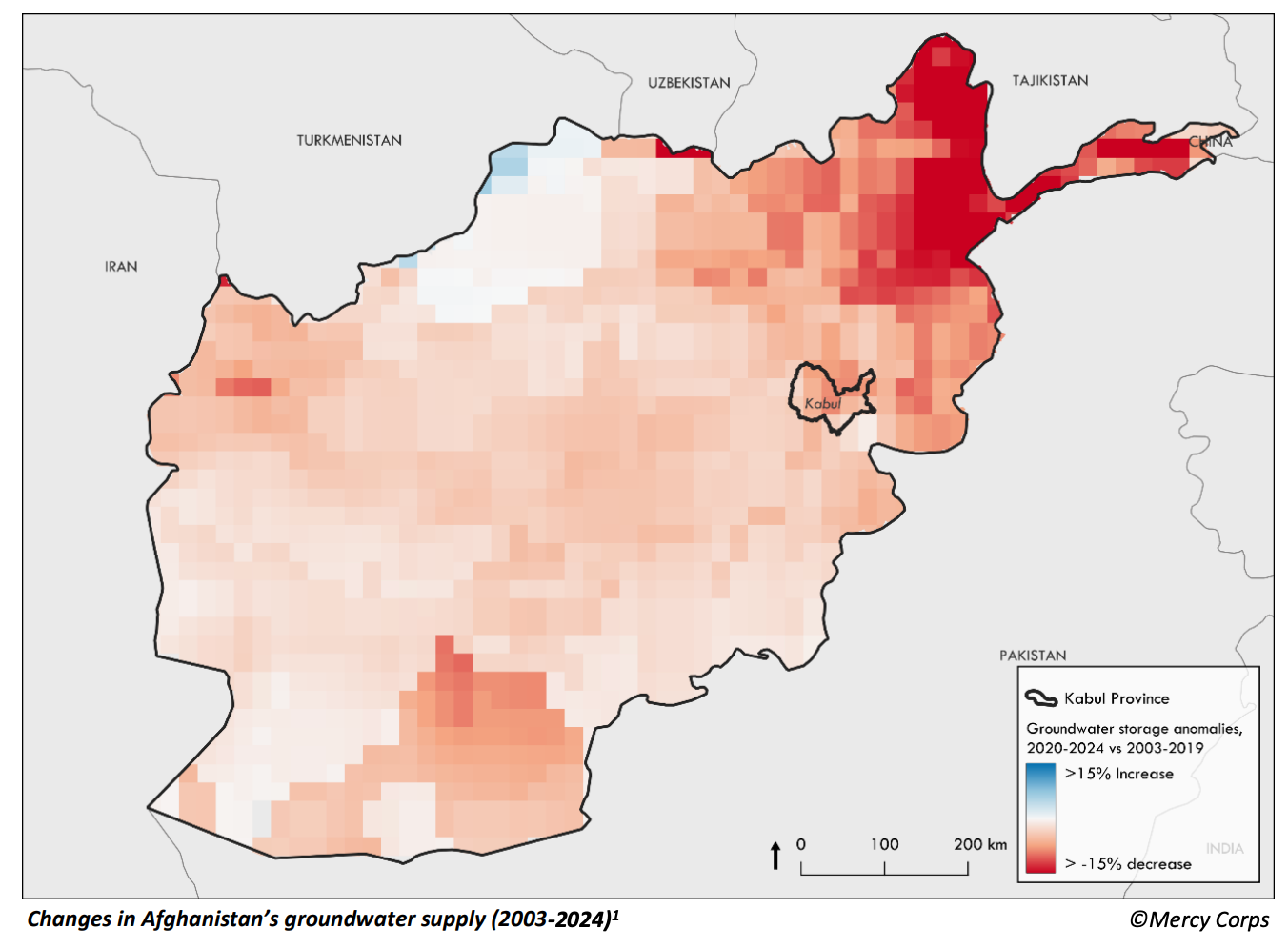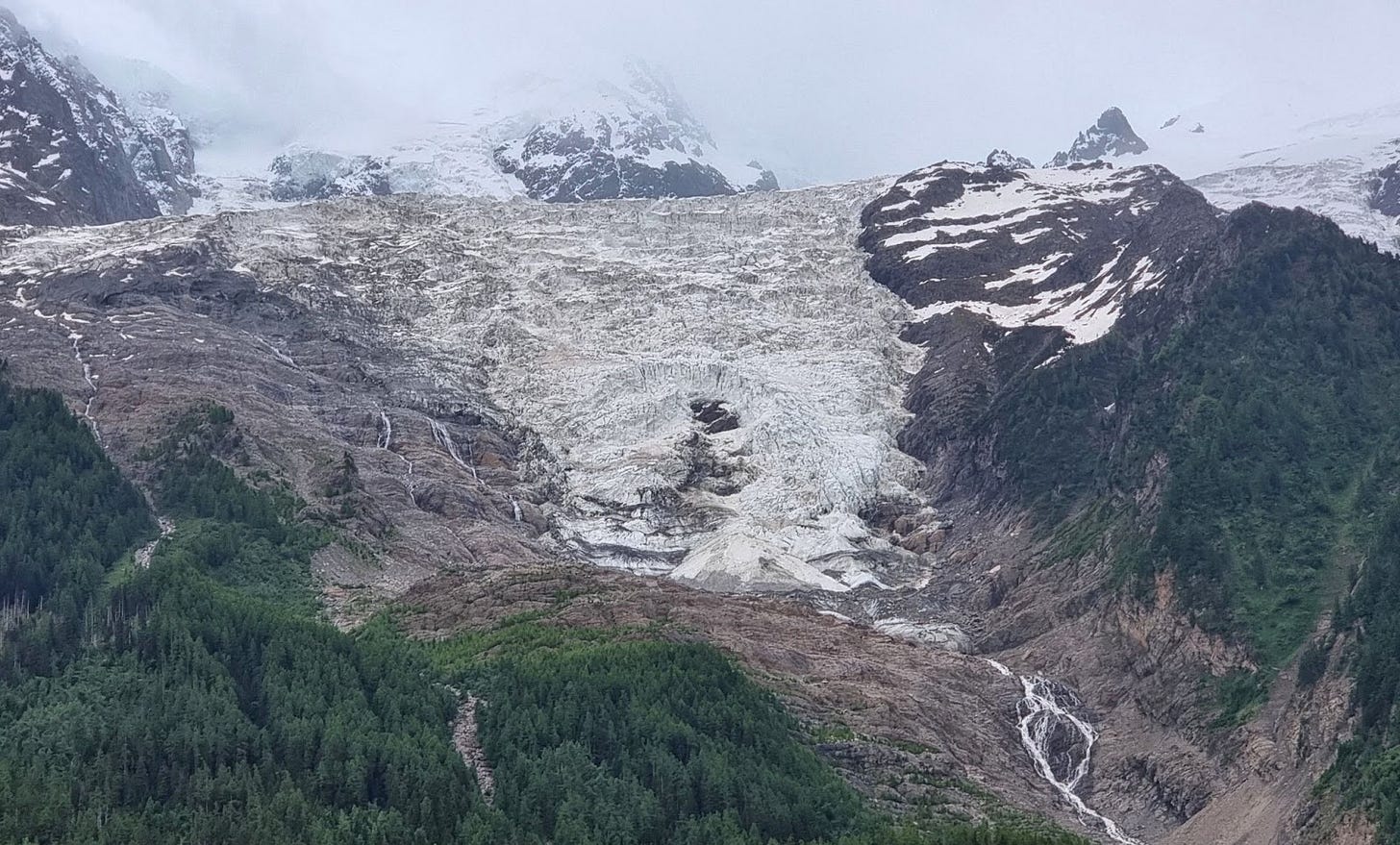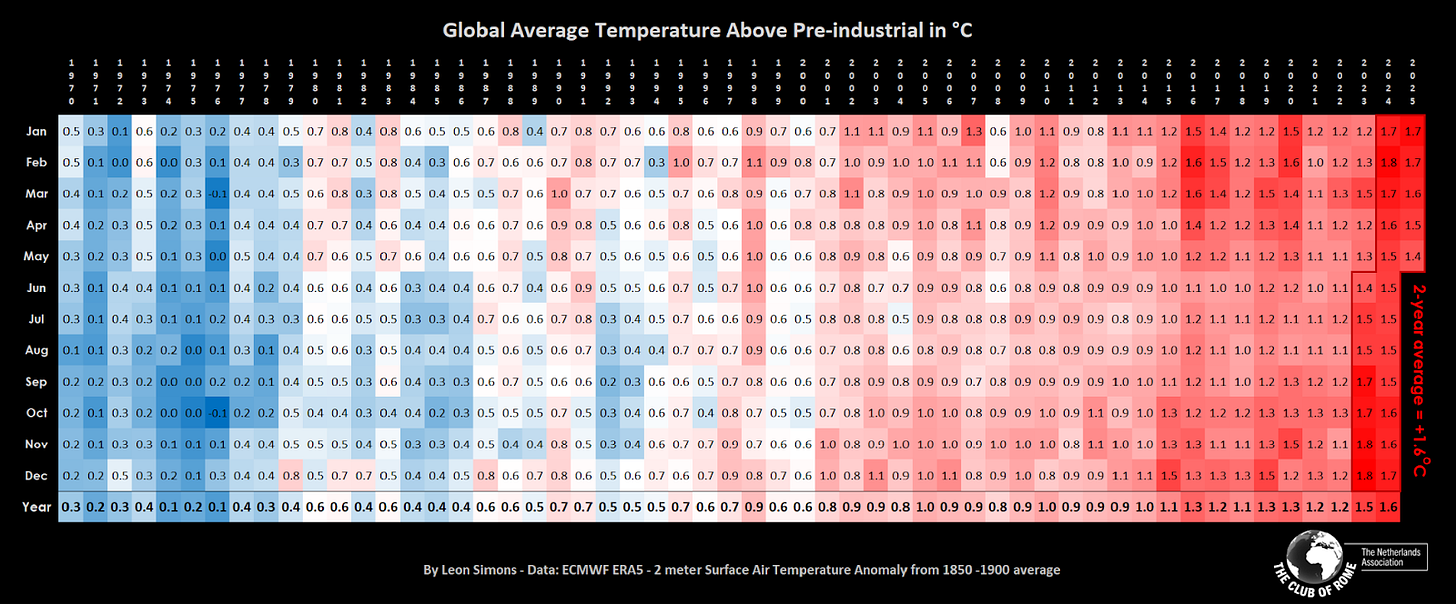Last Week in Collapse: June 1-7, 2025
Temperature records, geoengineering plans, escalation, internal crackdowns, shrinking glaciers, debt, and much more.
Last Week in Collapse: June 1-7, 2025
This is Last Week in Collapse, a weekly newsletter compiling some of the most important, timely, useful, soul-crushing, ironic, amazing, or otherwise must-see/can’t-look-away moments in Collapse.
This is the 180th weekly newsletter. You can find the May 25-31, 2025 edition here on Reddit if you missed it last week. Thank you for subscribing to the Substack.
——————————
Across the planet, insect populations are dying off, and often taking higher-order predators with them. Scientists blame the dieoff on a number of factors, namely global warming, widespread use of pesticides, War, light pollution, but especially lengthening periods of Drought. Some species of insects have seen their numbers crater more than 75% in the last 40 years. Reptiles and bird species are also decreasing.
Scientists continue to be increasingly anxious about earth’s tipping points, and the consequences of several of them mounting up. The WMO is expecting another year of temperatures at least 1.5 °C above the baseline, and that for “every tenth of a degree above 1.5 °C, the risk of tipping points increases,” says one expert. She goes on to say that “current climate policies are projected to lead us to about 2.6 °C of warming by the end of the century,” which is concerning because a study in Science reports that “nearly twice as much glacial mass loss will occur if climate warms by 2.7°C compared with that which would accompany a warming of only 1.5°C above the preindustrial average.”
Clean or cold? The Indian subcontinent—one of the slowest warming regions on earth—is believed to have resisted significant warming in recent decades on account of its massive air pollution, despite many dark particles absorbing more sunlight. But aerosols reflect light, and India’s expanded irrigation system distributes water more widely, thus cooling the land and counteracting global warming. The supposedly inevitable decarbonization of India’s coal-dependent energy sector, coupled with eventual Drought, will probably eventually hit India (pop: 1.46B) with an abnormal increase in their average heat. Faster than expected. This was also discussed on the subreddit in an underappreciated post.
A depressing study in Nature Communications Earth & Environment claims that “we are likely already at (or almost at) an overshoot scenario, supporting recent studies warning of substantial irreversible ice loss with little or no further climate warming.” They claim that a rise of sea levels by at least 4 meters (13 feet) is basically inevitable, as a result of the melting of the Antarctic Ice Sheet. The study examined 800,000 years of ice loss and regrowth, and states that we could only regrow these ice sheets by thousands of years at pre-industrial temperatures…
A 5.8 earthquake in Türkiye on Tuesday injured dozens and killed one. As FEMA prepares for the summer hurricane season far behind schedule, many current officials are jumping ship, and being replaced with DHS officials. A co-founder of the UK’s “Just Stop Oil” organization was sentenced to 30 months in prison for planning “to cause disruption at Manchester Airport” last August. Researchers are pinpointing another stressor to Antarctic wildlife: sound, emitted by humans hundreds of meters away.
The UK is funding a range of climate projects, including five outdoor geoengineering projects expected to begin in 2026. Among the experiments is solar radiation management (SRM)—this can be achieved through dispersing reflective particles in the atmosphere, or through marine cloud brightening, or other methods. One planned experiment will “involve brightening clouds within areas up to 10 km × 10 km” and another “involves pumping seawater from beneath existing ice and spreading it on top, where the frigid air freezes it quickly, creating thicker ice patches” in the Canadian Arctic.
The WMO released its State of the Climate in the South-West Pacific report, a 26-page document that states a colossal marine heat wave (roughly 90% the size of the continent Asia) hit the area in 2024. Sea levels are also rising in the Southwest Pacific by about 4mm/year.
“2024 was the warmest year on record in the South-West Pacific region, at approximately 0.48 °C above the 1991–2020 average…..In Indonesia, glacier ice loss continued rapidly in 2024, with the total ice area in the western part of New Guinea declining by 30%–50% since 2022….In 2024, ocean warming in the South-West Pacific reached unprecedented levels, with record-breaking sea-surface temperatures, near-record ocean heat content, and nearly 40 million km2 affected by marine heatwaves….The rate of ocean warming over the past two decades (2005–2024) was more than twice that observed over the period 1960–2005….The area-averaged time series for the South-West Pacific region indicates average SST warming at a rate equivalent to the global mean rate….the sea-level rise of the last three decades exceeds the global mean of 3.5 mm ± 0.3 mm/year…..The entire ocean area of the South-West Pacific region is experiencing ocean acidification….” -selections from the report
A study in GeoHealth examines California’s Salton Sea, a low-oxygen & highly salty lake whose water levels have been dropping for decades. Concentrations of agricultural runoff chemicals have increased, instigating algae growth and the dieoff of other life. This resulted in the increasing emission of hydrogen sulfide (H2S), which causes health problems and has been previously remarkably underreported.
The European Drought Observatory claims that 53% of Europe and the Mediterranean Basin were afflicted by Drought in May; it was a record percent since they started monitoring 13 years ago. Britain, reacting to unpredictable weather patterns lately, is preparing to build nine large reservoirs in the next 25 years, following 30+ years in which no big reservoirs were built. A recent study out of North Carolina found that coastal flooding is generally worse & more common than what tide gauges record.
India’s monsoon season has started, and one urban planner said “The pace of urban expansion has far exceeded the evolution of supporting infrastructure, particularly in water and drainage systems.” 34+ people have already died from flooding in the country’s northeast last weekend, and Delhi just ended its wettest May in 120+ years. Scientists at NASA’s Goddard Institute for Space Studies—which conducts large-scale climate modeling, among others things—are calling the proposed defunding of the lab an “absolute shitshow.” Drought in central China is impacting wheat harvests. Kabul (pop: 5M) is projected to exhaust its water supplies by 2030, according to a recent report; “families now spend 15–30% of their monthly income on water….68% of households incur water-related debt.”
Flooding in parts of Yunnan, China. A new June heat record, 37.9 °C (100 °F) in Koh Samui, Thailand. Most of Canada’s wildfires are burning out-of-control. Projections for summer in North America and Eurasia forecast a record hot season. Earth’s planetary albedo continues decreasing. Last May, the Mauna Loa observatory recorded a monthly average CO2 concentration of over 430 ppm for the first time.
The Bossons Glacier, in the French Alps, continues shrinking. Updated casualty reports from Nigeria’s recent floods indicated 500+ people were killed. Multi-year datasets confirm that, over the past two years, earth had “a global temperature anomaly above 1.6°C.”
“Atmospheric evaporative demand,” (AED) sometimes called “atmospheric thirst,” represents how much water the atmosphere wants to absorb/evaporate from earth’s surface—how thirsty the atmosphere is for surface-level moisture. A Nature study from a few days ago indicates that “AED has increased drought severity by an average of 40% globally.” The study’s data ends in 2022, which they also determine was the worst year for global Drought in the previous 40 years.
——————————
Following a 2024 study of Holloman Lake in New Mexico that found most wild birds & mammals were “heavily contaminated” by PFAS……a new, expanded study, to be published this August concluded that “All surface water, soil, plant, algae, invertebrate, bird, mammal, and reptile samples from Holloman Lake had PFAS detections above the report limits.” The site also set a new world record for PFAS levels in a plant sample, and for PFAS concentrations in any body of water—and for PFAS levels in a (dead baby) bird. The striking levels of PFAS pollution are blamed on firefighting foam used by the Air Force at an airbase next to Holloman Lake.
The cost of debt servicing in the UK is rising to unsustainable levels. Public debt is projected to increase from about 100% of national GDP to 270% by the year 2075. If you ask some researchers, the future is feudal, with a higher degree of privatization of everything: “few have more.” Some call it neomedievalism. Last week the U.S. saw new unemployment filings hit their 8-month high—at 247,000 new jobless benefits claims.
In a moment of good news, researchers out of Australia have made a major breakthrough in developing a cure to HIV, from which some 40M people currently suffer worldwide. Their full study published in Nature Communications explains how their method of using mRNA can help cells identify HIV hidden inside, which may be able to be targeted in the future.
In a moment of bad news, the expanding access to antibiotics (which saves people’s lives) has also accelerated the development of superbugs which threaten to spread and jeopardize society as a whole. Antimicrobial resistance (AMR) is thus both can’t-live-without and a long-term existential risk. Some believe AMR will be the leading cause of death in 2050.
Keep reading with a 7-day free trial
Subscribe to Last Week in Collapse to keep reading this post and get 7 days of free access to the full post archives.




